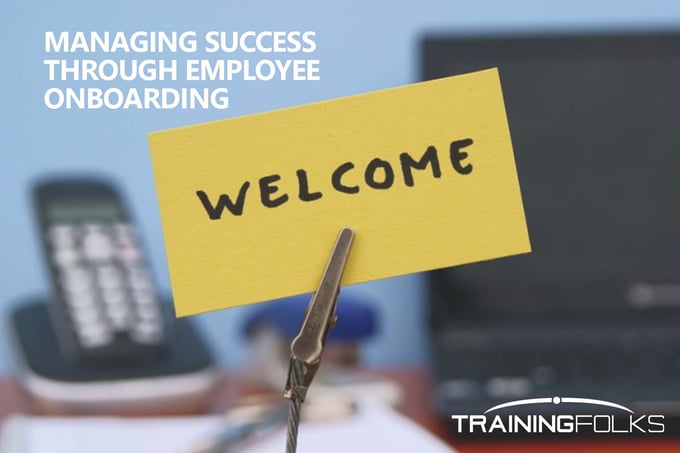Why Effective Employee Onboarding Is Critical

Think back to your first day at your current job. How was it? Did you get a formal introduction to the team? Were your work station, technology and passwords all set up and awaiting your arrival? Did you know where the closest bathroom to your desk was located? How about the great places to grab a bite at lunch or a cocktail after work?There are a shocking number of individuals that join organizations every day that continue to miss out on an effective employee onboarding strategy that would touch all of these topics plus many more with almost 60% of companies failing to set milestones or goals for new hires.1
In turn, these organizations are actually setting themselves up for a higher rate of failure due to increased turnover, lower engagement and poor satisfaction levels for both employees and managers that stem from the very first few days that an employee came on board.
When planning your effective onboarding program, keep in mind that it is not the same as new employee training. Yet another pitfall that the team here at TrainingFolks helps steer clients clear of is to treat training and employee onboarding as one program when they are very different. 
Training for example does not include setting up the new hire with an office ‘buddy’ or ensuring that they know where to get office supplies. Onboarding does not include taking an employee through training of how to use a program or how to create or generate a report. Keeping the two separated is important to ensuring success with both.
Planning your employee onboarding program should include the following 7 elements for success.
Strategic Onboarding - Strategically link organizational objectives, goals and cultural norms to the goals of the onboarding program through effective instructional designer techniques. The more strategic the corporate training, the more invested both the employee and the organization will be in the employee's success, and the more quickly they can get up to speed.
Schedule Their Time - Taking them for lunch on the first day sends a great message. This eliminates first day jitters of "Where do I go? What do I do?" However, that is not all you need to schedule. The best corporate training onboarding programs are typically 90 days, with short and long-term benchmarks built into the employee's role and work schedule.
Create Learning Objectives – Ensure your corporate training program outlines all relevant information. Design all required onboarding knowledge, skills and abilities into formal learning objectives, with set conditions, timelines and performance standards. Also determine "what" information is appropriate to be learned "when". Overloading them with everything they need to know in one day or less will not only overwhelm them, but will take up more time when the learning needs to reoccur at the "right time" again anyway. Inform the employee that their role is to learn, and set them on the right path to success. Get employees excited about their new role by setting SMART goals for them.
Use a Blended Learning Approach - Since adults learn best in small chunks, design a multi-faceted, modulated learning approach. Blended learning arrangements are the combination of elearning programs, scheduled face-to-face classroom training, coaching sessions or mentoring on a timely basis. Plan the learning when the learning needs to occur. For example, teach them about their benefits package once they are eligible for benefits, not on the first day. Otherwise, they will probably need refresher training again at the eligible time period.
Hook Them Up - Grab the attention of your new employee immediately and foster the unique tools and language that socializes them quickly into your corporate culture and makes them feel a part of your organization quickly. What do they need to know to get integrated? For example, are there terms and lingo that they need to learn to fit in? Providing them with a small token containing your organization's logo is also a nice touch.
Evaluate Performance - Design both informal and formal feedback channels into the program, with success as the primary goal. Hold your employees accountable for their actions and measure employee reaction, learning, behavior and results. Give feedback often. Record and reward those who demonstrate desired behaviors and reach their targets.
Make Them Matter - Use feedback from new hires as a part of your program audit. Implementing the suggestions of even the most unassuming feedback could be the difference between a good and a great program.
You can download a checklist here Here are 7 Free Tips on how to design a successful onboarding training process.

